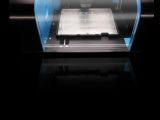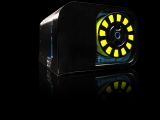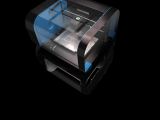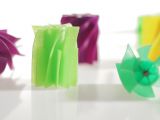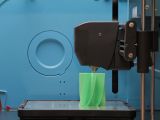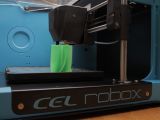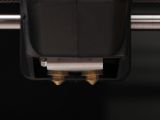There are plenty of 3D printers out there, but with each one there's a compromise. You either give up on quality, reliability, speed, or price. Most of the time, it's a combination of the four. The CEL Robox 3D printer aims to offer the most in as many of those areas as possible.
First and foremost, the driving point behind the Robox was simplicity. Hobbyist 3D printers and even prosumer models are too fiddly, they require a lot of attention, a lot of calibration, and a lot of expertise.
The Robox aims to automate as many things as possible, so users can get printing with just a few clicks. It achieves this in a number of ways. The Robox has automatic bed leveling, so there's no need for calibration. It also automatically detects the printing material.
Another very important feature is the ability to pause prints. Users can stop the process at any given time and then resume it later. The printer also detects any problems; it constantly monitors the motion of the filament and pauses the print if it encounters any errors. The solid steel frame and enclosed build area also minimize problems.
"There are many people that believe 3D printing is not ready for the mass-consumer market and that it is just too difficult to use. We've set out to solve this problem by designing out all of the current problems with domestic 3D printers from the ground up," the CEL team writes.
"Due to the high price of similar machines, we believe the technology has not yet reached the hands of those that matter – the small start-ups, artists, architects, hackers/makers and especially students and children," it adds.
But the printer does more than simplify the process; it also comes with a dual-nozzle system. This isn't used for two-color printing or anything similar. Rather, the two nozzles are different sizes, making it possible to get better detail with one nozzle and faster speed in areas where there's less need for details, with the second one.
The specs aren't bad either, build volume is 210x150x100 mm, which is average at best. But things get better, as layer resolution is an impressive 20 micros. The Robox also works with PLA, ABS, HIPS Nylon, PC, and PVA. Of course, all of that is great but what matters is the price. The CEL Robox will sell for a reasonable £849 ($1,364 / €1,003) when it becomes available.
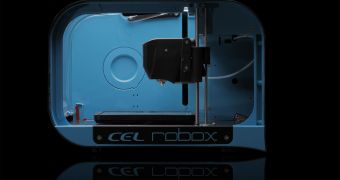
 14 DAY TRIAL //
14 DAY TRIAL // 
